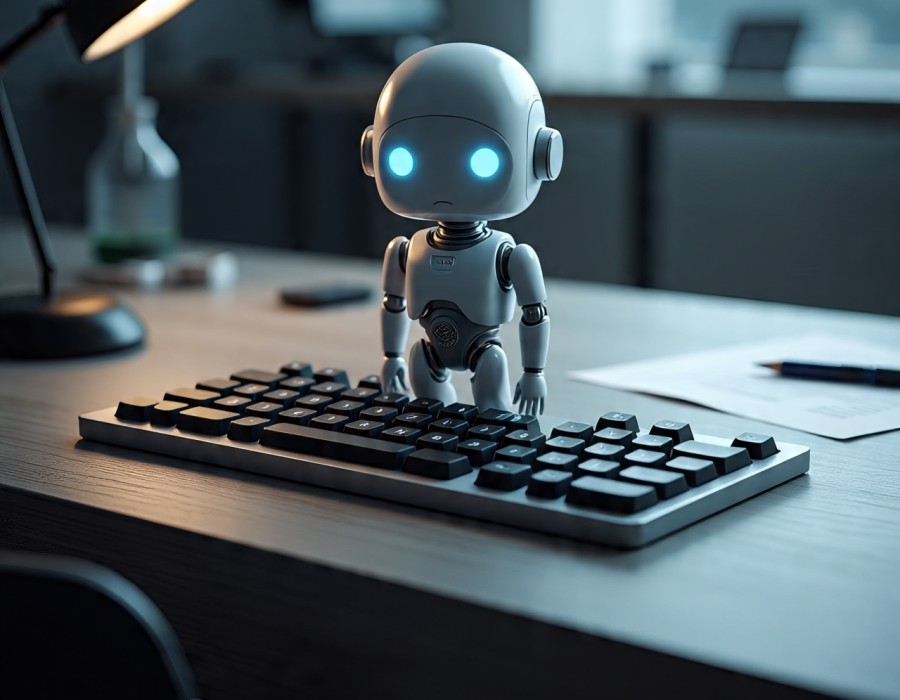AI Development Has Entered a New Era
Let’s be real — AI isn’t some futuristic concept anymore. It’s already shaping how we live, work, and think. But 2025 is where things start to get truly interesting. We’re watching artificial intelligence evolve from something that automates tasks into something that understands, reasons, and collaborates.
AI development today isn’t just about smarter algorithms. It’s about merging human creativity with machine precision. Whether it’s self-learning systems that adapt in real time or neural networks that generate original content, the boundaries we thought existed are falling fast.
From Automation to Understanding
For years, AI meant efficiency — systems that could crunch numbers, classify data, or respond to basic commands. Now it’s about understanding. The next generation of AI models doesn’t just process information; it interprets context, intent, and emotion.
For example:
- Customer service bots can now sense tone and adjust their responses to sound empathetic.
- Healthcare AI tools analyze not just symptoms but patient behavior and history to suggest tailored treatments.
- Education platforms track how students learn, then change the lesson flow to match each student’s pace.
This shift is huge. We’re not teaching machines what to do — we’re teaching them how to learn.
The Rise of Generative Intelligence
Generative AI took off in 2023, but it’s only getting started. What began as text and image generation has grown into code writing, video editing, voice synthesis, and creative collaboration.
The real innovation now is co-creation. Humans give direction, AI builds upon it. Think of it like working with a super-fast creative partner that never gets tired. Writers use it for ideation, designers for concept art, and developers for prototyping.
In 2025 and beyond, AI development will center on tools that learn your personal style and evolve with you — not just serve generic answers. Imagine a creative assistant that grows alongside your skillset. That’s where the industry is heading.
AI at the Edge: Power Meets Speed
Until recently, AI systems relied heavily on cloud processing. That’s changing fast with the rise of edge AI — intelligence running directly on local devices.
Why it matters:
- Real-time performance — No waiting for data to travel to and from servers.
- Stronger privacy — Sensitive data stays on your device.
- Reduced costs — Less bandwidth, fewer resources, faster decisions.
Think about autonomous cars making split-second choices, or wearable health devices detecting early warning signs instantly. Edge AI is what makes those possible. It’s one of the biggest trends defining AI development in 2025 and beyond.
Ethics, Transparency, and Trust
The more powerful AI gets, the more questions we need to ask about how it’s built. That’s why ethical AI development is now a top priority.
Developers are designing systems that are:
- Explainable: Users can see why an AI made a decision.
- Fair: Bias detection is now built into training models.
- Secure: Privacy and data governance are no longer optional—they’re foundational.
AI isn’t just about intelligence anymore; it’s about integrity. The most successful companies will be the ones that balance innovation with accountability.
Public vs. Private AI Development: Finding the Balance
Every organization exploring AI faces one big decision:
Should they rely on public AI platforms like OpenAI, Google, or Anthropic, or build private AI systems customized to their data and goals?
Here’s how it breaks down:
- Public AI Development Companies: Perfect for startups and smaller teams. You get access to high-end models instantly, no infrastructure needed.
- Private AI Development Companies: Tailored for enterprises handling sensitive data or needing full control. They build models around proprietary systems, ensuring privacy and customization.
In practice, most companies go hybrid—using public models for idea generation and private systems for execution. This flexibility defines the modern AI strategy.
AI in Action: Transforming Every Industry
You can already see how deeply AI is being woven into business operations:
- Finance: AI predicts market trends, detects fraud, and even executes automated trading.
- Retail: Personalized product recommendations now feel almost human.
- Manufacturing: Predictive maintenance keeps factories running without interruption.
- Healthcare: AI-powered imaging and diagnostics are improving accuracy and saving lives.
The next step? Cross-industry integration. Imagine healthcare AIs learning from financial forecasting or environmental monitoring models. The more these systems learn from one another, the faster innovation accelerates.
Human + AI: The Co-Intelligence Model
The most exciting development isn’t AI replacing humans—it’s humans learning to think with AI. This co-intelligence model combines human creativity, ethics, and empathy with AI’s speed and scale.
Here’s what that looks like in practice:
- Creative teams use AI as an idea amplifier.
- Developers use AI to debug and optimize in real time.
- Researchers use AI to simulate experiments before running them physically.
We’re entering a stage where working with AI is as natural as working with software or search engines. The difference is that AI learns with you.
The Road Ahead: Adaptive and Human-Centric AI
So, what’s next? Expect a push toward adaptive AI — systems that evolve continuously, learning from every new interaction. Instead of fixed updates, AI will grow like a living system, always tuning itself for better accuracy and relevance.
This will also make AI more human-centric. Future systems will focus less on raw power and more on understanding emotion, ethics, and social context. Imagine AIs that detect burnout in remote teams or tailor wellness programs for employees.
The end goal isn’t to make AI human—it’s to make it more humane.
Final Thoughts
AI development in 2025 is about breaking boundaries—between human and machine, creativity and computation, automation and emotion. We’re building systems that don’t just serve us but evolve with us.
The companies leading this revolution understand one simple truth: AI isn’t a tool. It’s a collaborator. And those who embrace this mindset early will define the future of innovation, productivity, and connection.





Comments